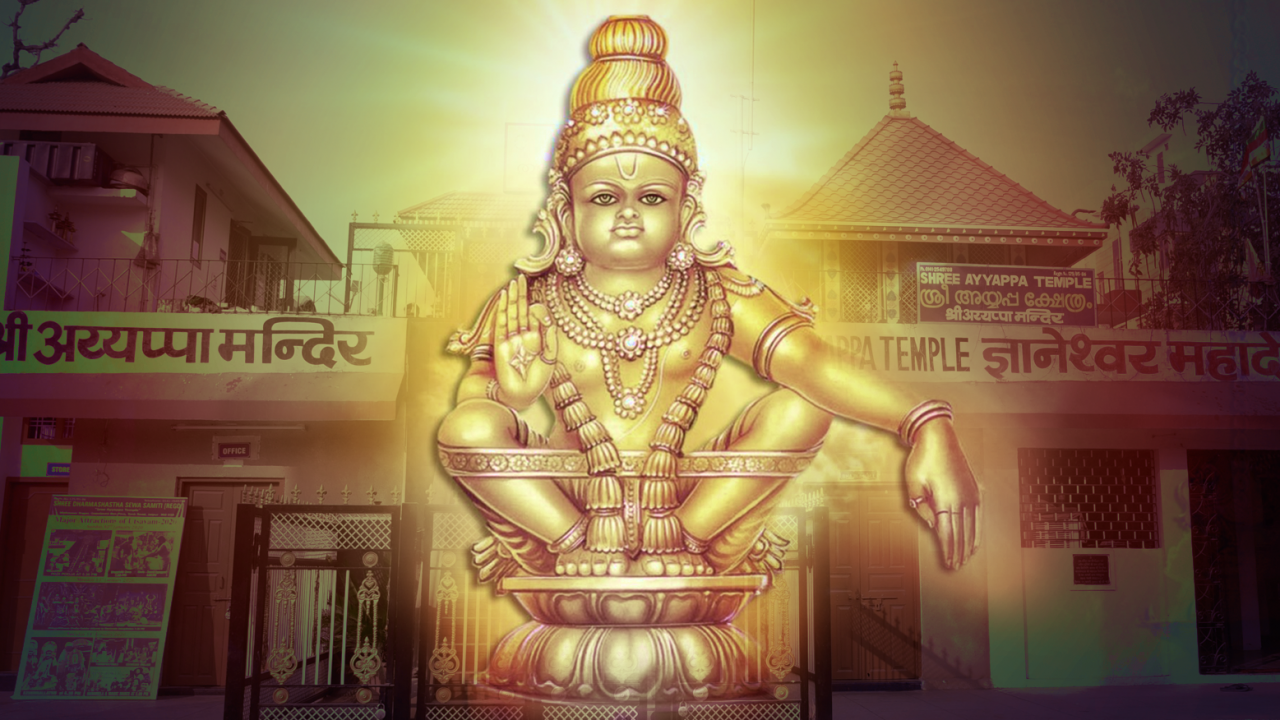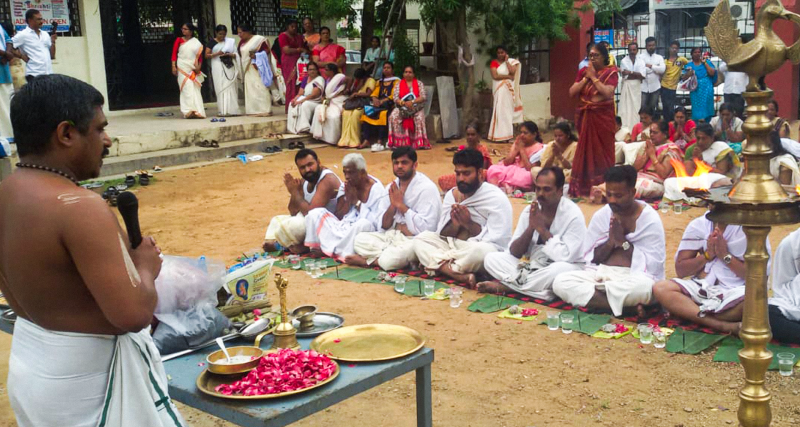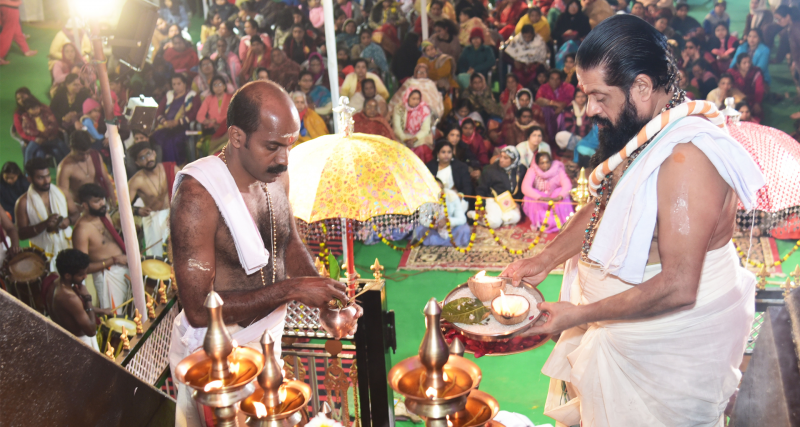India is the land of deities and temples are constructed in a peculiar style. Most of them have their unique style of presentation. Now take a look at the idol postures. There is specific concept for the posters of deities that we worship. The idols that we worship are mainly in 3 positions, of sitting, standing or laying. The images of the gods or goddesses are usually carved in four types, viz. Patmasana Siddhasana, Vajrasana, and Gomukhasana.
But when we see Lord Ayyappa, the state of sitting may be called Arddhasana, Yogapadasana or Yogarudha Siddhasana. This status of sitting reveals the mood of asceticism, the Tapobhava.
There is a binding of knees with a cloth in the style of sitting of Lord Ayyappa while he is holding the Yogamudra. The feet of a yogi who is in tapovrutti (in the ascetic calmness) will never let move away his legs. There is a very silent secrecy.
When a man or a woman bends his or her legs whether it is on the right or left, there is a hidden meaning which is worldly related. A man God if he is seen holding his left leg folded, may be considered that he is willing or expecting to sit his lady over it.The left side is considered for wife. The wife is imagined to be sat on the left thy of her husband. You can see the examples in Lakshmi Narasimha. Suppose if it is the right leg folded it may be considered as for the son or the daughter. Lord Narasimha with Prahlata can be taken as example.
The idols for goddesses are carved, taking into consideration of our devata sankalpa. Most of them are seen sitting with the imagination of saparivara (having spouse and offsprings on both sides).
Lord Ayyappa yoga posture is similar to Yoga Narasimha posture where the deity’s legs are crossed. But when we compare this with Lord Ayyappa,the legs are not crossed. But here, the concept of Lord Ayyappa is considered Naishtika Brahmachari. Thus he has no need to fold his legs because he has no wife or offsprings. The sitting stage in the form of folded legs in either side will be made only on the idols of gods having family. Since Lord Ayyappa is a brahmachari and an ascetic, his idol is made in the form of sitting but the legs have been risen a little and it reveals that his legs has been given to nobody to sit aside. He has also bound his two knees and his back with Yogapatta.
There are more to say about the posture of Lord Ayyappa. In images almost all the gods and goddess are seen sitting on simhasanas. But Lord Ayyappa is sitting on a pita. There is a difference in sitting on a chair and a pita on the feet. The man who sits on a chair feels comfortable that his hips are in safety to keep the whole body in balance. That kind of sitting, is in one way, a bhogarupa (enjoyful). But the man who is sitting on his feet is not in a joyful way but in a Yogabhava (in the mood of asceticism or dhyana). Ayyappan in the sitting posture means the observing state. This state gets one to the conscious-awareness (observing) state which is called Sat-Chit-Ananda or meditative state.
Meditation is not just simply closing eyes, crossed legged for many minutes or hours. We should be in this meditative state when we are awake. The belt Ayyappan wears signifies the territory of the observance. So instead of getting in the lying posture (totally inactive) in which we cannot experience anything (Samadhi), it is best for experience to be in this consciousness-awareness state. This is the sitting posture of Ayyappan.




